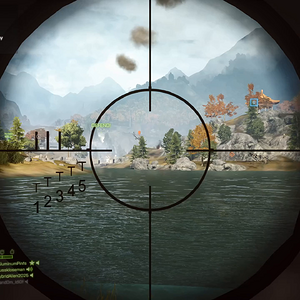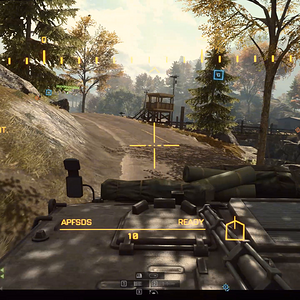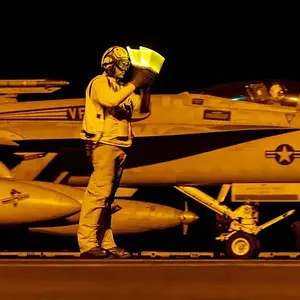F
Fred Dreier

In 2019, a Nepali mountaineer and rescue specialist named Gesman Tamang led a team of six onto 27,838-foot Makalu to recover the body of a climber who had died in the so-called “death zone” above 26,000 feet. On their ascent, one of the team members, a Nepali soldier named Narayan Singh, showed signs of altitude sickness. Tamang encouraged Singh to rest at Camp III, at around 24,600 feet, and to then descend to safety.
The team continued climbing until they located the body near the French Couloir, at 27,000 feet. It took them more than 24 hours to free the body from the mountain, secure it to a sled, and move it down to Camp III. As they entered camp, they found Singh in a tent, barely breathing.
“We tried to give him oxygen and save his life, but we couldn’t,” Tamang told Outside.
Singh died a short time later. The group had no choice but to leave him on the mountain in order to complete their original mission of bringing down the other body. They arranged Singh’s body alongside fixed ropes so that other crews could bring him down.
“Once I reached base camp, I couldn’t go back up for my friend,” Tamang said. “It was too painful. My heart wouldn’t allow it.” Another team eventually retrieved Singh’s remains from the mountain.
Every few years, groups of climbers embark on missions to remove bodies from Mount Everest and other peaks above 8,000 meters. These expeditions are arduous and sometimes deadly. This year, the Nepali Army is sending a crew of 12 recovery specialists up Mount Everest to bring down five bodies located high on the peak. On April 14, the team reached Everest Base Camp to start the job.
Army Major Aditya Karki, who oversees the project, said recovering bodies has two goals: bringing closure to loved ones back home and making the route up Everest more palatable for future generations of climbers.
“Seeing a dead body on Everest is gruesome,” he told Outside. “Last year, a number of clients were distressed by passing the bodies of dead climbers on their climb. This can have long-lasting psychological effects and impact their well-being, which we want to prevent.”
No one knows for sure just how many corpses remain on Mount Everest, but a 2015 study by the BBC placed the estimate at more than 200. The highest concentration of bodies lie between Camp IV at 26,600 feet and the summit. These missions are extremely expensive, due to the manpower and gear needed to survive in that environment. Karki estimates the price tag for the 2024 mission to be between $75,000 and $80,000 per-body, and believes that the total cost of the expedition—which will also remove garbage from higher camps—to exceed $600,000.
Every climber who ascends the high peaks in Nepal’s Himalayan range is required by law to carry insurance to cover the cost of their own rescue and recovery in the event of an accident, including death. But the regulation is inconsistently enforced, and the extreme environment where climbers die—and the grisly ways in which they perish—often make recovery extremely difficult or impossible. Those who fall into deep crevasses or are buried by avalanches may never be taken down.
Some climbers request that their remains be left on Mount Everest, but this ask has no sway with Nepali authorities. In 2023 an Australian climber named Jason Kennison died near the summit—he had made it clear in writing that he wished for his remains to stay on the peak.
But Kennison’s body is slated to be removed this year by Asian Trekking, his outfitter in 2023. Famously, Edmund Hillary’s request to have his ashes scattered on the peak was denied in 2010 after a local citizens’ group objected on cultural grounds.
Tshiring Jangbu Sherpa, one of the 12 members of the Nepali Army’s mission, told Outside that the five bodies selected for removal this year were chosen because of their relatively close proximity to the route. Officials did not say whether the bodies are from the record 18 climbers who perished on the peak in 2023. All five are located above Camp IV, in a dangerous area of the mountain where terrible weather, strong winds, and thin air create an inhospitable environment.
Tshiring Jangbu said that in the death zone, it’s nearly impossible to carry a human body weighing 180 pounds. “Above 8,000 meters, it’s difficult for two people to carry an 8-kilogram [17 pounds] oxygen cylinder,” Tshiring Jangbu said.
For the 2024 mission, the 12 rescuers will be split into two six-man teams. One group will undertake the removal of bodies, while the other will carry the oxygen, tools, and supplies needed for the mission. The squad will have to make multiple trips from Camp IV at 26,000 feet to retrieve each body.
Bringing a body back down is a painfully slow task with plenty of dangers. Once rescuers locate a body, they must extract it from snow and ice—a task that sometimes requires them to dig or chip it from its frozen resting place. Crews then load the body onto a lightweight rescue sled that is little more than a thin sheet of plastic, and secure it with rigging. Then, they move along the fixed ropes as a team, dragging, shuffling, and lowering the payload down to Camp IV on the South Col.

Crews load a body out of a helicopter after a death on Mount Everest in 2017. (Photo: GOPEN RAI/AFP via Getty Images)
The climbers who are part of the 2024 recovery expedition will repeat this journey for each of the five bodies. Then, the team will lower them again in turn down the steep Lhotse Face, and across the upper reaches of the Khumbu Glacier to Camp I at 19,900 feet. A helicopter will fly the bodies on to Base Camp and then further down the valley. The journey descends 9,000 vertical feet and takes upwards of four days.
“Body recovery is incredibly risky. It’s much harder than just climbing the mountain,” Tamang said.
Tamang, who has completed more than a dozen recoveries across Nepal’s 8,000-meter peaks, said multiple challenges may arise during a typical mission. Like other expeditions on Everest, missions to retrieve bodies depend on good weather. According to Tshiring Jangbu, when the wind blows above 30 knots (34 mph), recovery workers risk getting frostbite or succumbing to exhaustion. “We need a good weather window to successfully recover the bodies,” he said. “Frostbite is a real concern for our team.”
How quickly a team can remove a body depends on how it is positioned in the snow and ice. Most are positioned awkwardly, making it challenging to secure it to the sled. “Some bodies are positioned in a manner that makes it impossible to package,” Tamang said. “They’re always frozen solid, so you can’t just bend them to fit. You have to carry them as you find them.”
Tamang said rescuers try to be as delicate as they can with each body, but sometimes parts of the body are worn off during the downward journey over rocks and ice. “We can’t think about it as just handling a dead body,” Tshiring Jangbu said. “We have to be respectful and safe.”
There’s also an emotional and psychological toll that recovery climbers must endure. They must be comfortable working around dead bodies and dealing with the very human emotional response that comes from proximity to death. Crews must also perform their jobs while climbers pass by on the way to the summit.
Tamang survived his 2019 mission on Makalu and has gone on to complete body recoveries on other peaks in recent years. He said that, while recovery work is important, it doesn’t bring him the same level of pride as guiding or helping climbers in the Himalayas.
“I’d much rather save someone’s life,” he said.
The post Removing Dead Bodies from Mount Everest Is Dangerous and Expensive. Here’s Why. appeared first on Outside Online.
Continue reading...







